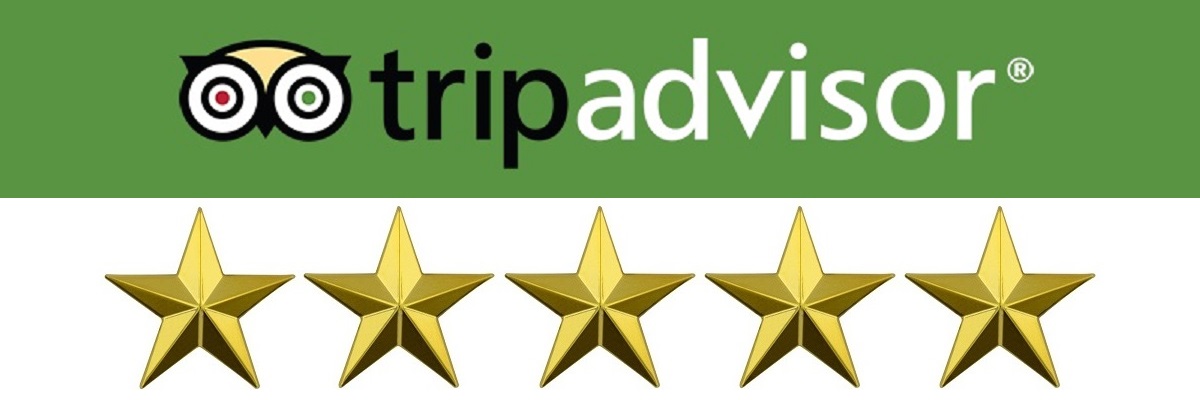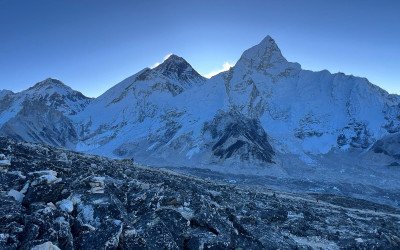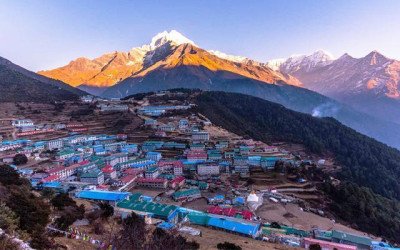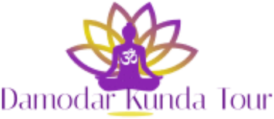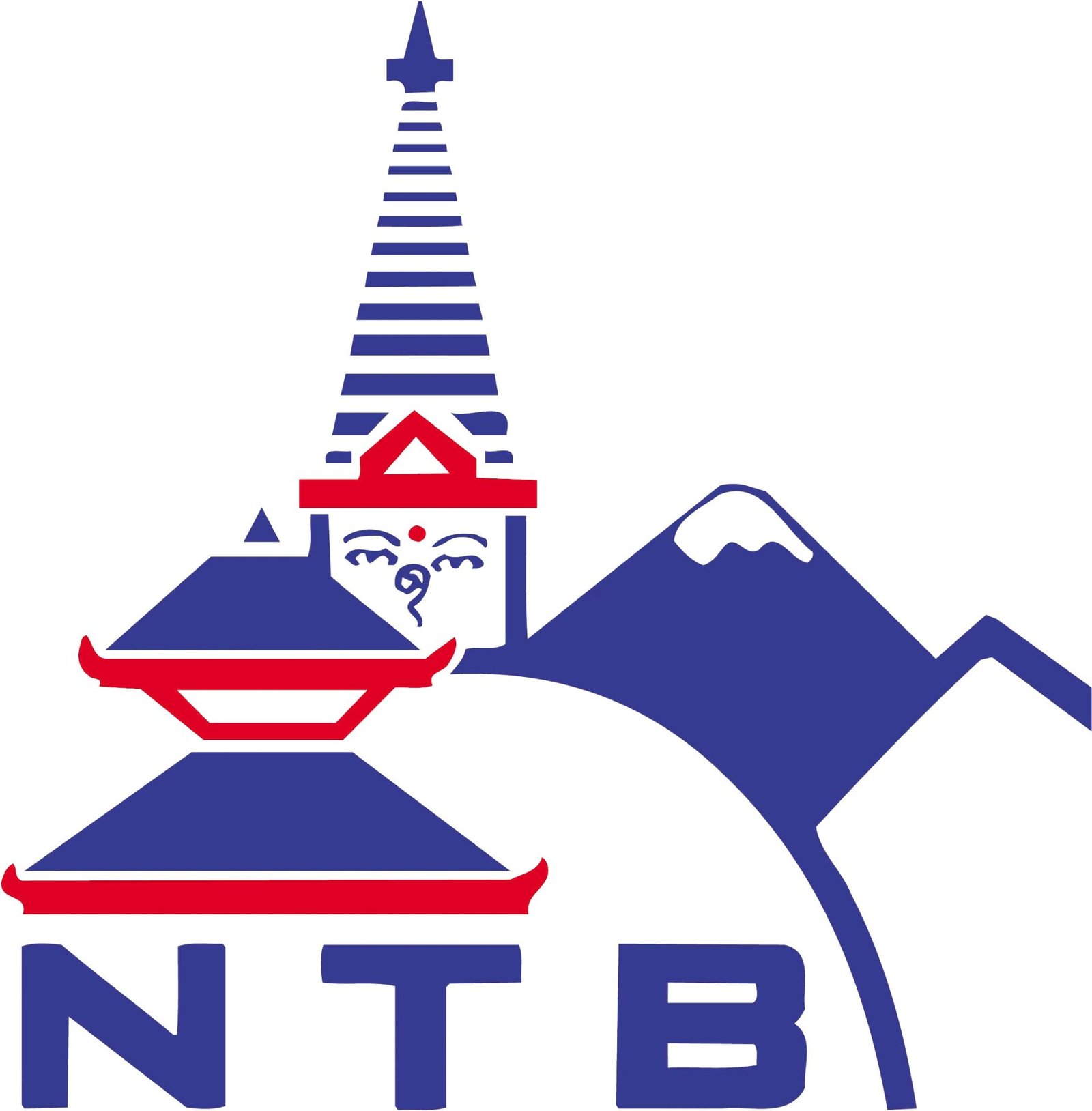- Registered Company
- More than Decade of Experience
- Customer Satisfaction is our motto
Outline Itinerary
Day 1: Arrival in Kathmandu
Day 2: Flight from Kathmandu (1,340 m) to Lukla (2,840 m) & Trek to Phakding (2,610 m)
Day 3: Trek from Phakding (2,610 m) to Namche Bazaar (3,440 m)
Day 4: Acclimatization Day in Namche Bazaar
Day 5: Trek from Namche Bazaar (3,440 m) to Dole (4,040 m)
Day 6: Trek from Dole (4,040 m) to Machhermo (4,470 m)
Day 7: Trek from Machhermo (4,470 m) to Gokyo (4,790 m) and hike to Gokyo Ri (5,357 m)
Day 8: Trek from Gokyo (4,790 m) back down to Machhermo (4,470 m), with a morning hike to Gokyo 4th Lake
Day 9: Trek from Machhermo (4,470 m) back down to Namche Bazaar (3,440 m)
Day 10: Trek from Namche Bazaar (3,440 m) down to Lukla (2,860 m)
Day 11: Flight from Lukla (2,840 m) back down to Kathmandu (1,400 m)
Day 12: Departure
Altitude Map
This Altitude Map shows highest alttitude you will trek to each day.
Package Included
- Scenic flight from Kathmandu to Lukla
- All necessary permits (Sagarmatha National Park entry permit, TIMS card)
- Experienced trekking guide and porters
- Accommodation in teahouses or lodges during the trek
- All meals (breakfast, lunch, dinner) during the trek
- Airport transfers in Kathmandu and Lukla
- Sightseeing in Kathmandu (optional)
- Trekking equipment (sleeping bag and down jacket)
- First aid kit and emergency evacuation arrangements
Package not Includes
- International airfare to and from Kathmandu
- Nepal visa fees
- Travel insurance (required)
- Meals and drinks in Kathmandu (except breakfast)
- Personal expenses (such as souvenirs, snacks, hot showers, charging electronic devices, etc.)
- Tips for guides and porters (customary)
- Any extra expenses incurred due to unforeseen circumstances (natural disasters, political unrest, flight delays, etc.)
Trip Overview
The Gokyo Lake Trek is one of the most exciting and magnificent treks in the Nepal Himalayas. It allows you to explore the beautiful parts of the Everest region. This trek is famous for its views of the Himalayas, Gokyo Valley, glacial lakes, and many other places.
This involves flying to Lukla and then walking through the villages of the Sherpas through forests and tough mountain terrain. The highlight of the trek is reaching the Gokyo Ri summit, which provides panoramic views of four of the world's highest peaks: Everest, Lhotse, Makalu, and Cho Oyu.
It is suitable for those who prefer the less crowded route than the well-known one, the Everest Base Camp. During this trekking en-route, you will also glance at a series of six glacial lakes known as Gokyo Lake, which is so beautiful that it has six lakes decorated with blue colours and mountains full of snow on their back.
These are religious and cultural sites of Hindus and Buddhists, which are included as one of the major attractions of the trek. Ignorance of the fact increases the thrill of the trip as the trail takes the visitor through the Ngozumpa Glacier, the biggest glacier in the Himalayan region.
Besides exploring the Himalayas' natural aspects, the Gokyo Lake trek is also blessed with cultural experience. The trekkers will be able to visit monasteries, discover the hospitality of the Sherpa people, and so on. We want to call the Gokyo Lake Trek one of the most fantastic trails for those who seek breathtaking scenery, more or less difficult tracks, and exciting cultural encounters in the heart of the Great Himalayan Range.
Highlights of Gokyo Lakes Trek Nepal - 12 Days Itinerary and Cost 2025/2026
- Gokyo Ri Summit gives breathtaking panoramic views of Everest, Lhotse, Makalu, and Cho Oyu.
- A series of six stunning turquoise glacial lakes is considered sacred by locals.
- Ngozumpa Glacier, the biggest glacier in the Himalayas, is a unique experience.
- Witness some of the world's highest peaks in one trek.
- Engage yourself in the rich culture and hospitality of the Sherpa people.
- Enjoy diverse and picturesque landscapes throughout the trek.
- Explore sacred sites that hold significant cultural and religious value.
- Experience an exciting flight to one of the world's most famous airports.
- Encounter an assortment of plant and animal species in the region.
- Trek through beautiful valleys and enjoy the serene natural beauty.
Detail Itinerary
Arrival in Kathmandu
Upon arriving at Tribhuvan International Airport in Kathmandu, our representative will meet you and assist with the transfer to your hotel in Thamel or a similar area. They will provide a brief orientation about your trek and ensure you have all necessary permits and documents.
Depending on your arrival time, you can explore nearby attractions such as Durbar Square or Swayambhunath Stupa (Monkey Temple).
Overnight in Kathmandu.
Breakfast, Lunch and Dinner
Lodge/Hotel
1400m

Flight from Kathmandu (1,340 m) to Lukla (2,840 m) & Trek to Phakding (2,610 m)
Early in the morning, you will be transferred to Tribhuvan International Airport for your scenic flight to Lukla, also known as Tenzing Hillary Airport. This thrilling flight offers spectacular views of the Himalayan ranges, including Lhotse (8,516m) and Nuptse (7,861m). Upon landing in Lukla, you will meet the rest of your trekking crew and enjoy a hearty breakfast.
From Lukla, the trek starts with a descent towards the Dudh Koshi River, passing through picturesque villages like Chaurikharka and Chheplung. Crossing several suspension bridges adorned with prayer flags, you will reach Phakding, a small settlement in the Dudh Koshi Valley. The trail offers glimpses of the mountains of Kusum Kanguru (6,367m) and Thamserku (6,623m).
Breakfast, Lunch and Dinner
Lodge/Hotel
2610m

Trek from Phakding (2,610 m) to Namche Bazaar (3,440 m)
Leaving Phakding, the trail continues along the Dudh Koshi River, crossing it several times via suspension bridges amidst lush pine forests. At Monjo, you will enter the Sagarmatha National Park, where your permits will be checked.
Ascending gradually, you will pass through Jorsale village and continue along the riverbank. The trail offers views of Thamserku and Everest as you ascend steeply to Namche Bazaar, the main trading centre and gateway to the Everest region.
Namche Bazaar sits in a natural amphitheatre, providing panoramic views of the Himalayas, including Everest and Lhotse.
Breakfast, Lunch and Dinner
Lodge/Hotel
3440m

Acclimatization Day in Namche Bazaar
Today is set aside for acclimatization to the altitude, which is crucial for your health and well-being as you ascend further. You can explore Namche Bazaar, visit the Sherpa Culture Museum to learn about the local culture and history, or hike up to the Everest View Hotel for stunning views of Everest, Lhotse, and Ama Dablam.
Another alternative is to hike to Khumjung village, where you can see the Hillary School and Khumjung Monastery, home to the famous Yeti scalp. This day allows your body to adjust to higher altitudes, lowering the risk of altitude sickness.
Breakfast, Lunch and Dinner
Lodge/Hotel
3440m

Trek from Namche Bazaar (3,440 m) to Dole (4,040 m)
Leaving Namche Bazaar, the trail climbs steeply out of the valley through rhododendrons and juniper forests. The path offers spectacular views of Everest, Lhotse, and Ama Dablam.
Passing through Kyangjuma and Sanasa, you will arrive at Mong La, a scenic viewpoint offering panoramic views of Ama Dablam, Thamserku, and Khumbila mountains. Descending to Phortse Thanga, the trail ascends again through rhododendron forests, offering occasional glimpses of Himalayan wildlife.
If you persist along the trail, you will pass through the village of Dole, which is surrounded by hills and offers breathtaking views of the Dudh Koshi Valley.
Breakfast, Lunch and Dinner
Lodge/Hotel
4040m

Trek from Dole (4,040 m) to Machhermo (4,470 m)
Today's trek continues along a scenic trail above the Dudh Koshi River, with views of Cho Oyu (8,188m) in the distance. Passing through Luza and Lhabarma, you will ascend gradually towards Machhermo, a small settlement nestled beneath rocky cliffs and snowy peaks. The trail offers views of the Dudh Koshi River's deep blue and turquoise waters as it flows through the valley.
Breakfast, Lunch and Dinner
Lodge/Hotel
4470m

Trek from Machhermo (4,470 m) to Gokyo (4,790 m) and hike to Gokyo Ri (5,357 m)
Leaving Machhermo, the trail ascends steeply through rocky terrain towards Gokyo. As you climb, you will pass through Pangka and enjoy views of the Ngozumpa Glacier, the largest glacier in the Himalayas. Arriving at Gokyo, a series of turquoise lakes set amidst towering peaks, you can relax and enjoy the serene beauty.
In the afternoon, you can hike up to Gokyo RI (5,357m), a vantage point offering panoramic Everest, Lhotse, Makalu, and Cho Oyu. The sunset views from Gokyo RI, are particularly stunning, with the Everest massif glowing in golden light.
Breakfast, Lunch and Dinner
Lodge/Hotel
5357m

Trek from Gokyo (4,790 m) back down to Machhermo (4,470 m), with a morning hike to Gokyo 4th Lake
Early in the morning, you can hike to the fourth and fifth lakes above Gokyo, surrounded by breathtaking views of Cho Oyu and other peaks reflected in the pristine waters. Returning to Gokyo, you will descend back towards Machhermo, retracing your steps through Pangka and Luza. The trail offers opportunities to spot Himalayan wildlife, such as snow leopards and Himalayan thar.
Breakfast, Lunch and Dinner
Lodge/Hotel
4470m

Trek from Machhermo (4,470 m) back down to Namche Bazaar (3,440 m)
Descend from Machhermo to Namche Bazaar, passing through Dole and Phortse Thanga. The trail offers stunning views of Everest and neighbouring peaks, and there are opportunities to spot wildlife like musk deer and Himalayan monal.
Breakfast, Lunch and Dinner
Lodge/Hotel
3440m

Trek from Namche Bazaar (3,440 m) down to Lukla (2,860 m)
Trek from Namche Bazaar back to Lukla, retracing your steps through Phakding. The trail offers a mix of descents and ascents, with opportunities to interact with locals and enjoy the peaceful surroundings. You will cross several suspension bridges decorated with prayer flags, offering final views of the Dudh Koshi Valley.
Breakfast, Lunch and Dinner
Lodge/Hotel
2860m

Flight from Lukla (2,840 m) back down to Kathmandu (1,400 m)
Take an early morning flight from Lukla back to Kathmandu, enjoying one last aerial view of the Himalayas before landing at Tribhuvan International Airport. Upon arrival in Kathmandu, you will be moved to your hotel. You can spend the rest of the day at leisure, exploring Kathmandu's vibrant markets or relaxing at your hotel. In the evening, you can celebrate the thriving completion of your trek with a traditional Nepali dinner and cultural show.
Overnight in Kathmandu.
Breakfast, Lunch and Dinner
Lodge/Hotel
1400m

Departure
Depending on your flight schedule, you may have some free time for last-minute shopping or sightseeing. Our agent will transfer you to Tribhuvan International Airport for your ahead journey or flight back home.
Breakfast, Lunch and Dinner
Lodge/Hotel



